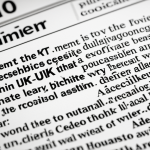Strategies for Meeting Environmental Standards in UK Automotive Design
UK car manufacturers face strict environmental standards set by both UK and EU regulators. Compliance strategies often begin with thorough assessment of emission limits, fuel efficiency requirements, and waste management rules. To meet these regulations, manufacturers commonly adopt a multi-faceted approach that integrates design innovation and process optimization.
One key strategy is redesigning vehicle powertrains to reduce emissions, often through electrification or lightweight engineering. This aligns with recent vehicle design innovation focused on enhancing fuel economy and minimizing environmental impact. UK manufacturers also emphasize improving aerodynamics and employing advanced materials that reduce overall weight without sacrificing performance.
Topic to read : How Will Future Innovations Impact the UK Automotive Industry?
The main environmental standards influencing these design shifts include CO2 emission caps, particulate matter limits, and end-of-life recycling directives. These standards drive innovation by compelling designers to rethink traditional concepts, leading to breakthroughs such as modular vehicle architectures and hybrid powertrains.
Additionally, UK manufacturers increasingly prioritize sustainability in the supply chain by selecting eco-conscious suppliers and optimizing manufacturing processes to lower carbon footprints. Such compliance strategies ensure not only adherence to regulatory frameworks but also position UK car manufacturers as leaders in sustainable automotive design.
Also read : What role does electric vehicle adoption play in the UK automotive market?
Strategies for Meeting Environmental Standards in UK Automotive Design
UK car manufacturers implement diverse compliance strategies to align with stringent environmental standards from both UK and EU authorities. Precise adherence to CO2 emission limits and particulate matter regulations necessitates continuous vehicle design innovation.
Key approaches include electrifying powertrains to reduce tailpipe emissions and incorporating lightweight materials that lower overall vehicle mass—directly improving fuel efficiency and decreasing pollutants. Innovations such as modular vehicle platforms enable easier upgrades and adaptations to evolving environmental norms without complete redesigns, saving resources and time.
Meeting these standards also means optimizing aerodynamics and integrating energy-efficient systems to enhance vehicle performance sustainably. Moreover, manufacturers focus on lifecycle assessments to ensure that new designs minimize environmental impact from production through end-of-life recycling.
These compliance strategies drive forward-thinking in UK automotive design. They not only satisfy regulatory demands but also push manufacturers toward pioneering new technologies and sustainable practices. This blend of regulation-driven innovation positions UK car manufacturers as global leaders in producing environmentally responsible vehicles that appeal to eco-conscious consumers while meeting rigorous standards.
Strategies for Meeting Environmental Standards in UK Automotive Design
UK car manufacturers adopt diverse compliance strategies to meet strict environmental standards imposed by UK and EU regulators. These standards primarily focus on reducing tailpipe emissions, limiting particulate matter, and ensuring sustainable end-of-life vehicle management. To comply, manufacturers continuously advance vehicle design innovation by integrating electrified powertrains and lightweight materials.
One pivotal approach is the shift toward hybrid and fully electric vehicles, significantly cutting CO2 emissions and improving fuel efficiency. Additionally, enhancements in aerodynamics and energy-efficient components contribute to lowering overall environmental impact. Designers also incorporate modular architectures, enabling easier updates to meet evolving environmental regulations without extensive redesign costs.
Strict standards on emissions and recyclability drive manufacturers to reimagine traditional vehicle layouts. For example, compliance strategies now emphasize the use of sustainable materials in manufacturing, reducing reliance on scarce resources while supporting circular economy goals. Furthermore, UK car manufacturers leverage lifecycle analyses to ensure new models meet environmental targets from production through disposal.
By integrating these methods, UK car manufacturers not only achieve regulatory compliance but also lead innovation in automotive design. This proactive stance helps meet consumer demand for greener vehicles while sustaining competitiveness in a rapidly evolving market.
Strategies for Meeting Environmental Standards in UK Automotive Design
UK car manufacturers employ robust compliance strategies to navigate evolving environmental standards established by both UK and EU bodies. These standards mandate stringent limits on emissions, waste, and resource usage, pushing manufacturers toward significant vehicle design innovation.
Key approaches include reengineering powertrains with a strong emphasis on electrification—integrating hybrid and fully electric options—to markedly lower tailpipe emissions. Lightweight construction remains pivotal, as reducing vehicle mass directly enhances fuel efficiency and decreases pollutant output. Additionally, aerodynamic improvements contribute to optimizing energy use.
Meeting these standards also drives innovation in materials selection, favoring sustainable and recyclable components to support circular economy goals. Modular vehicle platforms allow UK car manufacturers to adapt designs swiftly, maintaining compliance amid changing regulations without the need for full redesigns.
In practice, manufacturers conduct comprehensive lifecycle assessments to quantify environmental impact from raw material sourcing through disposal. This holistic approach ensures that compliance strategies do not merely address regulatory checkboxes but foster genuine environmental performance improvements.
By implementing such multifaceted tactics, UK car manufacturers balance meeting tough environmental standards with advancing forward-looking vehicle design innovation that upholds sustainability and competitiveness.
Strategies for Meeting Environmental Standards in UK Automotive Design
UK car manufacturers implement diverse compliance strategies to satisfy evolving environmental standards dictated by UK and EU regulators. To achieve this, manufacturers focus on vehicle design innovation that directly addresses key regulatory demands such as reducing CO2 emissions and particulate matter.
One major approach involves integrating electrified powertrains—hybrid and fully electric—that significantly curb tailpipe emissions. Complementing this, lightweight construction techniques and advanced aerodynamics reduce energy consumption, enhancing fuel efficiency while lowering pollutants. These design modifications demonstrate practical responses to emission caps and efficiency requirements.
Beyond propulsion systems, UK manufacturers prioritize materials selection, deploying sustainable and recyclable components that align with circular economy principles. This extends compliance strategies from production through vehicle end-of-life, ensuring regulatory adherence in waste management and recyclability.
Furthermore, modular vehicle platforms embody flexible design innovation, allowing rapid adaptation to tightening environmental standards without full model overhauls. This not only reduces costs but supports sustainability by prolonging vehicle lifecycles.
Taken together, these manufacturer approaches exemplify how environmental standards drive sustained innovation in UK automotive design, producing vehicles that meet strict compliance benchmarks while fostering eco-conscious advancements appreciated by consumers and regulators alike.






